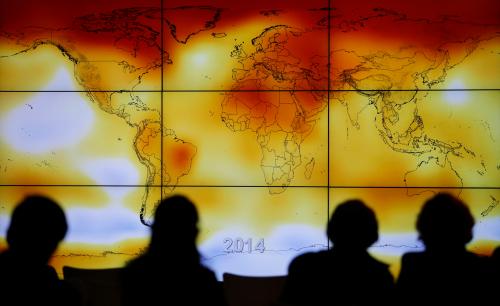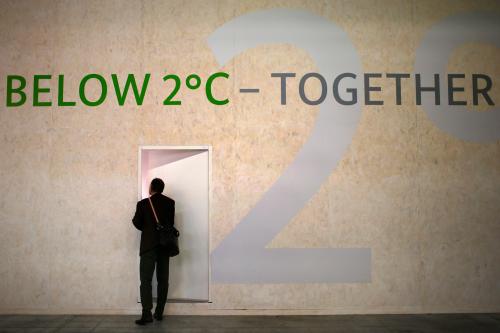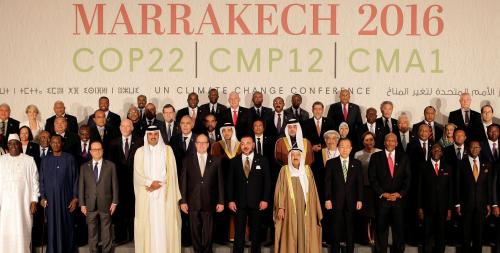Temperatures here in Durham, North Carolina, have soared close to 90 degrees Fahrenheit (32 Celsius). I’m told by natives that July will be equally hot, but much more humid. As I go from an air conditioned house to an air conditioned car to an air conditioned office, I thank Willis Haviland Carrier—the inventor of modern air conditioning—much like religious folks thank their patron saints.
From hot and humid to cool and comfortable
In 1902, while working for a heating and ventilation company in Buffalo, Carrier figured out a way to simultaneously cool the air and reduce humidity. His invention would change America, and is still changing the tropics.
A publishing company in Brooklyn hired Carrier to fix a moisture problem. The company’s paper would wrinkle during New York City’s humid summers, and the quality of printing would suffer. Carrier was trying to fix a problem of too much moisture, not high temperatures, to improve business, not make living easier. By using a simple filter, hot, humid, and dirty air was reconditioned to be cool, dry, and clean.
Carrier’s invention—and later his company—would ultimately allow American firms to better climate-proof production and sales. By the 1950s, 90 percent of American firms would name cooled air as the single biggest boost to their productivity, according to this excellent article in the Economist. Without air conditioning, Americans would not look forward to summers.
Willis Carrier, patron saint of development in the tropics?
Durham is about 36 degrees north, 12.5 degrees above the Tropic of Cancer. If air conditioning is so appreciated in temperate North Carolina, Carrier should be revered in the tropics. Imagine what air conditioning could do for people who live in tropical countries that have long, hot, and humid summers. The same article in the Economist notes:
“William Nordhaus, an economist at Yale, revealed more proof that heat wilts economies. Using a global grid system to escape the biases of national data, he identified an almost linear correlation between mean annual temperatures and productivity per head. People in the coolest climes, he found, generate 12 times the economic output of those in the hottest.”
It turns out that 40 percent of the world lives in the tropics. By 2050, in part because of air conditioning, this percentage will be more than 50 percent. To see why this is no small matter, take a look at Singapore, perhaps the biggest success story in the tropics. The late former-Prime Minister of Singapore Lee Kuan Yew, in this 2009 interview, pointed to air conditioning as the second-most important factor in Singapore’s success (the first was multicultural tolerance):
“Air conditioning was a most important invention for us, perhaps one of the signal inventions of history. It changed the nature of civilization by making development possible in the tropics. Without air conditioning you can work only in the cool early-morning hours or at dusk. The first thing I did upon becoming prime minister was to install air conditioners in buildings where the civil service worked. This was key to public efficiency.”
BUT WHAT ABOUT THE PLANET?
In richer countries, a sizeable fraction of people (about 90 percent in the United States) has air conditioned houses, cars, and offices. Or they live in colder climes where the number of “cooling degree days”—days during which the temperature exceeds 65 degrees Fahrenheit—is small. Unlike Prime Minister Lee, many of them see the costs of air conditioning more clearly than its benefits. This 2015 article tells us that America consumes more electricity for cooling than the rest of the world combined, but that this will change as Asians and Africans get wealthier:
“Only now is the U.S. waking up to the environmental cost of such massive energy consumption—and to the chilling prospect that the rest of the world may follow its example. The proportion of homes in Chinese cities with air conditioning rocketed from 8 percent to 70 percent between 1995 and 2004.”
By using a lot of energy and by releasing harmful chemicals into the air, air conditioning makes the world hotter. That would mean more air conditioning, and so on. This raises obvious questions. Is air conditioning increasing because the planet is getting hotter or because people are becoming wealthier? How much electricity do air conditioners consume? How much pollution do they cause?
This study by Lucas Davis and Paul Gertler shows that much of air conditioning demand is associated with income increases, not global warming. If household income in Mexico, for example, grows by 2 percent annually, 70-80 percent of Mexican households will have air conditioning by the end of the century. Extend this analysis to countries like China, India, Indonesia, and Nigeria, and the consequences for the planet are devastating. Look at the flip side though: income increases grow the demand for air conditioning, but air conditioning also increases income growth.
Actually, even in the U.S., despite the much-lamented “physical addiction” of Americans to cool air, air conditioners use just about 6 percent of total electricity produced. Today, a new air conditioner uses about half the energy of one produced in 1990. Chloroflourocarbons released from air conditioners, which were known to deplete the ozone layer, have been heavily regulated or banned since the 1980s. They are being replaced by hydro-chloroflourocarbons), which don’t do nearly as much damage, and hydroflourocarbons, which are even better.
The solution lies not in suffering sweaty summers, but investing in better technologies.
The Brookings Institution is committed to quality, independence, and impact.
We are supported by a diverse array of funders. In line with our values and policies, each Brookings publication represents the sole views of its author(s).








Commentary
Future Development Reads: Air conditioning and economic development
June 23, 2017